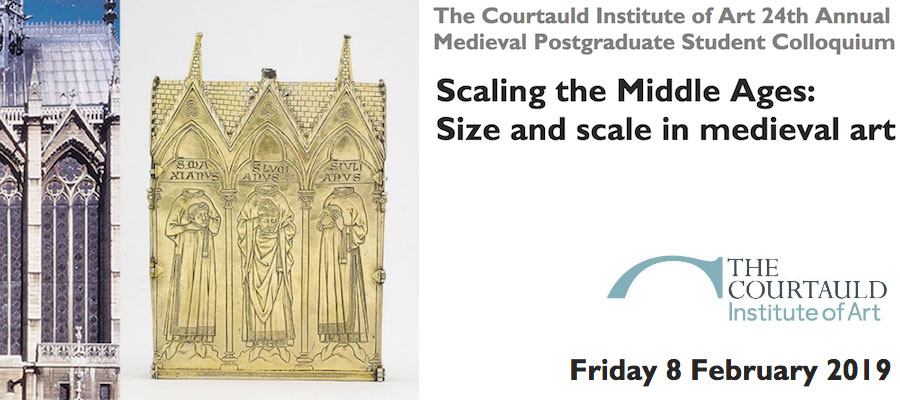Scaling the Middle Ages: Size and Scale in Medieval Art, Annual Medieval Postgraduate Colloquium, Courtauld Institute of Art, Vernon Square, February 8, 2019
Size mattered in medieval art. Whether building a grand gothic cathedral or carving a minute boxwood prayer bead, precisely how big to make it was a principal concern for medieval artists, their patrons, and audiences.
Examples of simple one-upmanship between the castles and palaces of lords and kings and the churches and cathedrals of abbots and bishops are numerous. How big to make it was a principal concern for both patrons and makers of medieval art.
Scale could be manipulated to dramatic effect in the manufacture of manuscripts and the relative disposition of elements within their decorative programmes. Divine proportions – of the Temple of Solomon or the Church of the Holy Sepulchre – were evoked in the specific measurements and configuration of contemporary buildings and decisions were made based on concern with numbers and number sequences.
In our age of viewing through digital surrogates, the Courtauld Institute of Art’s 24th Annual Medieval Postgraduate Student Colloquium invites its speakers to consider new approaches to issues of size and relative scale in relation to the making, meanings, and study of medieval art.
The Medieval Postgraduate Colloquium offers the opportunity for research students at all levels from universities across the UK and abroad to present and promote their research.
